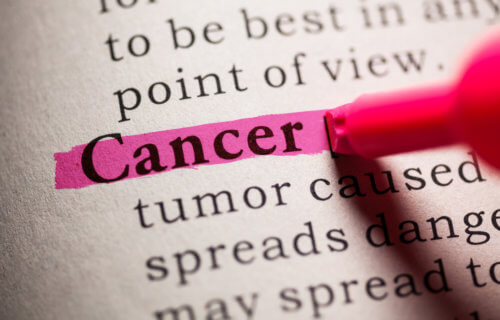We used to think cancers were diseases found almost exclusively in older people. Occasionally we’d hear about a woman with breast cancer in her 40s or even her 30s. Something seemed especially tragic about the disease being found in someone so young. In 1998, American journalist Katie Couric shared with the public that her first husband, Jay Monahan, died of colon cancer at age 42. In 2023, unfortunately, it isn’t so shocking to hear about a woman with breast cancer in her 20s, or a person with colon cancer in their 30s.
According to a recently published study in JAMA Network Open, cancer rates among young Americans are increasing rapidly. Cancer remains more common overall in patients older than 65, but rates of cancer are increasing in patients younger than 50. The study examined various registry data from more than 560,000 patients in the United States between 2010 and 2019. Dr. Benjamin Koh at the Yong Loo Lin School of Medicine, National University of Singapore, found a nearly one percent increase in cancer diagnoses in patients younger than 50.
For patients between 30 and 39 years of age, cancer diagnoses increased by about 19 percent. Breast cancer was the most common cancer in patients younger than 50. It was gastrointestinal cancers (stomach, colorectal, appendix, bile duct), however, which had the fastest growing rate of occurrence among all cancer types.
The study did not account for population growth or for increased cancer detection, which may explain some of the increased rates. Still, these numbers demonstrate the importance of increasing awareness of cancer screening programs and educating the public about avoiding cancer risk factors. Without such awareness and education, we can expect the rates of cancer in young people to continue rising. Although cancer is a complex diagnosis that is often a result of multiple factors, there are clear risk factors that are highly associated with many cancers. Take, for example, obesity.
Obesity’s link to cancer
Obesity is associated with at least 13 different cancers, including breast, colorectal, stomach, and pancreas. America is the most obese country among all high-income countries, and more than two in five American adults are obese, according to data from the National Health and Nutrition Examination Survey.
On an individual level, Americans must be cautious and control caloric intake with diet, as well as participate consistently in regular exercise to remain as healthy as possible.
Even with improved individual diet and exercise, the obesity epidemic in America will never end based on individual efforts alone. Federal and state policymakers must make fighting obesity a priority if there are to be meaningful results. One among many actions policymakers can take is increasing funding for important initiatives such as nutritional assistance programs that address social factors contributing to obesity, such as food insecurity and food deserts – areas within cities or rural regions that have little or no access to retail foods, especially fresh, unprocessed foods.
Low-income communities and households can rarely afford food that is high in nutritional content. Instead, they often settle for fast food that is cheaper, higher in calories, and lower in nutritional value. This type of food insecurity has caused obesity to be more prevalent among minorities and those of lower socioeconomic status. If America is ever to seriously address obesity, there must be dramatic increases in funding nutritional assistance programs to decrease food insecurity.

Drinking alcohol plays a role
Alcohol consumption is another important risk factor for cancer. According to the American Cancer Society, it is strongly linked to numerous cancers. These include breast and gastrointestinal cancers, which are currently on the rise in the population younger than age 50.
Despite the many harmful effects of alcohol on health, it remains an important part of American culture. According to the American Public Health Association, alcohol provides no health benefits.
The current guideline for alcohol consumption is abstinence, not drinking in moderation. Every effort should be made to support a message of abstinence to the American public. Just as a message of smoking cessation is propagated via mass media through commercials, that should be the case with alcohol.

Although we’re talking about about the rise in cancers among younger people, it’s important to note alcohol’s ties to heart disease. The new guideline that the only harmless amount of alcohol is zero is also about decreasing your risk for heart disease, which is the number one cause of death in the United States.
The most recent research shows that even one drink can raise blood pressure, which is one of the biggest contributors to heart disease.
Start screening at a young age
Aggressive screening for common cancers among the general public is essential for maximum detection.
Increased screening will invariably lead to higher cancer detection rates since more cancers will be picked up by diagnostic studies, and more lives will be saved. Saving lives is the fundamental purpose of screening. As an example, consider breast cancer, which represents the second most common cancer in women in the United States.
Of all new cases of breast cancer, nine percent occur in women under the age of 45 years. Breast cancer is screened for by mammography, which is a diagnostic test that uses X-rays to detect cancer in the breast. Data has demonstrated that mammographic screening starting at the age of 40 saves lives, reducing mortality by 40 percent when compared to no screening.
What are the current cancer screening guidelines?
Screening age and frequency are under constant scrutiny. You’ll note potential changes labeled “in progress”:
- 2016 Breast Cancer: Screening
- In Progress Breast Cancer: Screening
- 2021 Lung Cancer: Screening
- 2021 Colorectal Cancer: Screening
- 2018 Cervical Cancer: Screening
- In Progress Cervical Cancer: Screening
- 2018 Ovarian Cancer: Screening
- 2019 Pancreatic Cancer: Screening


Don’t rule out the covid vaccine and covid infections as studies are linking it to increases in gynecological cancers and diabetes, and many more issues.
Silverqueen,
Thank you for your comment. There are many investigations into the effects of COVID-19 vaccine and infection. Much time and replication of research is needed to determine if there are cause-and-effect relationships versus associations. Stay tuned – COVID-19 is going to be studied intensely and thoroughly for decades and longer.
At the present time, it is far, far more important to get vaccinated to avoid a severe, or even fatal, COVID-19 infection than to avoid the vaccine for any reason. If infections are linked to chronic diseases or malignancy, the COVID-19 vaccine would be a preventive treatment.
The mRNA COVID 19 vaccines are dangerous.
On Jan. 3, the office of Florida Surgeon General Dr. Joseph Ladapo issued a statement calling for the halt in the use of COVID-19 mRNA vaccines, citing the recent discovery of DNA contaminants in the vaccine vials.
Vaccinations are not perfect, but I was very pleased to learn that people who regularly are vaccinated have lower rates of dementia:
“Recent research suggests that regular vaccinations against influenza and other infectious diseases such as shingles, pneumococcal pneumonia, and tetanus, diphtheria and pertussis (whooping cough) may reduce the risk of developing Alzheimer’s disease and related dementias.
“Vaccines are the great public health success story of our generation,” said Paul E. Schulz, professor of neurology and director of the Neurocognitive Disorders Center at the McGovern Medical School at UTHealth Houston, who led several of the studies. “They keep you safe from any number of infections, many of which can be life-threatening. And now it appears there is another tremendous benefit, this one against a disease that is among the most feared.”
Thank you for your comment.